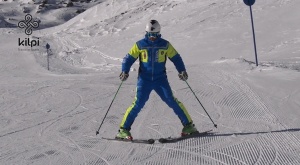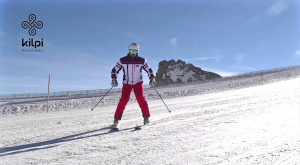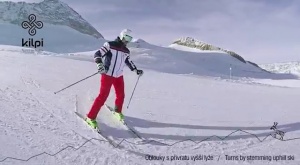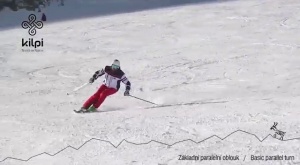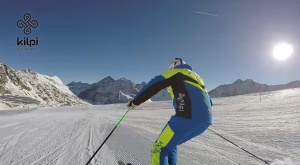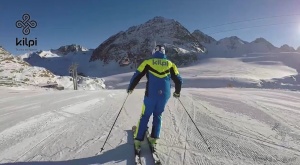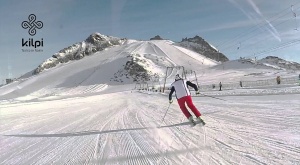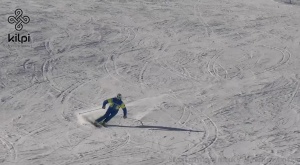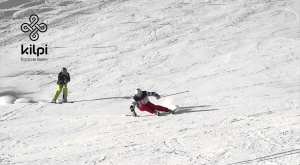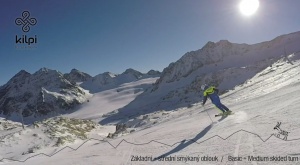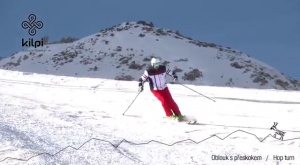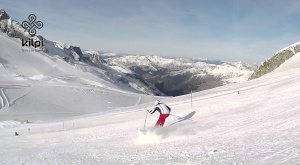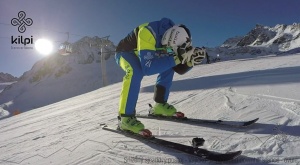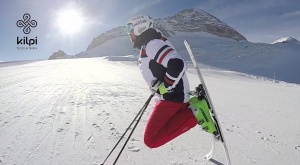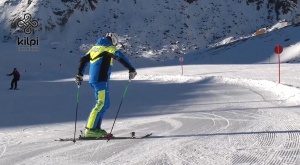 Manipulations, turnovers, hikes
Manipulations, turnovers, hikesHop turn
Purpose of the turn:
- Turning and conducting both skis in parallel position and keeping the basic downhill position
- Developing competence in skiing skills
- Rapid change of direction in difficult terrain and under severe conditions (unrefined terrain, deep snow)
- Dynamic balance
Terrain:
- Steep Slope
Description:
Rhythmic and dynamic riding is widely characteristic for hop turns - as well as for short skidded turns, but the range of movement are greater due to slope gradient. Strong edging, dynamic bounce from the edges and active slightly ski lifting help on steep slopes and in difficult terrain to rotate skis into the turn and quick change of direction.
We initiate a turn across the fall line. Our skis should be hip width apart. The turn is skidded throughout its whole phase.
Turns can be short or long, due to the slope gradient and terrain conditions.
Phases of the performance: We make the centre of gravity lower in a turn and thereby increase the pressure on the skis. At the end of the turn while riding diagonally slope, we simultaneously edge both skis. We will plant a pole and this gives us an impetus to the vertical upward movement – there will be strong unweighting, rotation and jump. By active rotating the skis to the fall line, over-edging will come and subsequently the turn is completed. Everything is done in a basic downhill skiing position.
The most common errors:
- Backward lean of a skier, or centre of gravity set too back
- Insufficiently dynamic over-edging skis in the turn
- Incorrect synchronization of the upper and lower limbs
- Too narrow or broad stance
- The wrong choice of terrain for training

